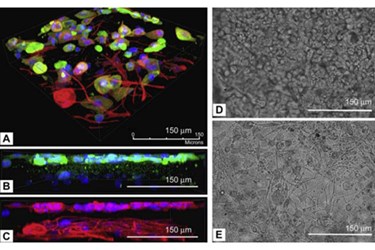3D Tissue Printing Technique Could Advance Stem Cell Research
By Joel Lindsey

A team of researchers at Rensselaer Polytechnic Institute (RPI) plans to apply their novel 3D printing technique to stem cell research — using the platform to create tissue similar to the natural environment of human stem cells.
Using funding that RPI’s assistant professor of biomedical engineering Guohao Dai was recently awarded through the National Science Foundation’s Faculty Early Career Development Award, the project will focus on finding a way to extend the viability of neural stem cells in the laboratory setting.
“Adult neural stem cells hold so much promise for treating injury and disease, but they are extremely difficult to work with,” Dai said in a press release published recently by the university. “We believe that we can apply 3D tissue printing technology to create a vascular niche that will prolong the life of the cells and, in turn, enable new opportunities for studying how they may be used to treat injury and fight disease.”
Stem cells are difficult to work with, since they quickly lose their potency after being removed from their natural biological environments due to a lack of nutrients and oxygen. In order to overcome this obstacle, Dai and his team developed a specialized 3D tissue printer that can create “biological tissue by carefully depositing cells, hydrogels, and other materials one layer at a time,” according to the press release.
The printer allows the researchers to incorporate perfused vascular channels within the fabricated biological tissue. These channels deliver nutrients and oxygen to the 3D printed tissue.
“Blood vessels run throughout almost every part of our bodies, bringing the oxygen and nutrients that allow our cells to survive,” Dai said in the press release. “The same is true of 3D cell structures. They need a vascular system in order to survive. Our device can print 3D tissues with small channels that function as blood vessels. This enables us to print cells with extracellular matrices that closely replicate those found within the body.”
The team has already used their 3D printing technology to study a thin layer of cells found in the circulatory system called the vascular endothelium. Dai and his colleagues will now focus on using their device to create 3D printed tissue that precisely matches all the parameters and components necessary to keep neural stem cells alive and potent.
According to Dai, the ability to extend the potency of stem cells could open the door for a greater understanding of stem cells — especially in regards to their potential role in treating spinal cord injuries and neurodegenerative diseases.
Earlier this month, Medical Device Online published an article about a similar project in which a research team devised a method for 3D printing the complex networks of blood vessels necessary for growing organic tissue.
Image Credit: RPI
